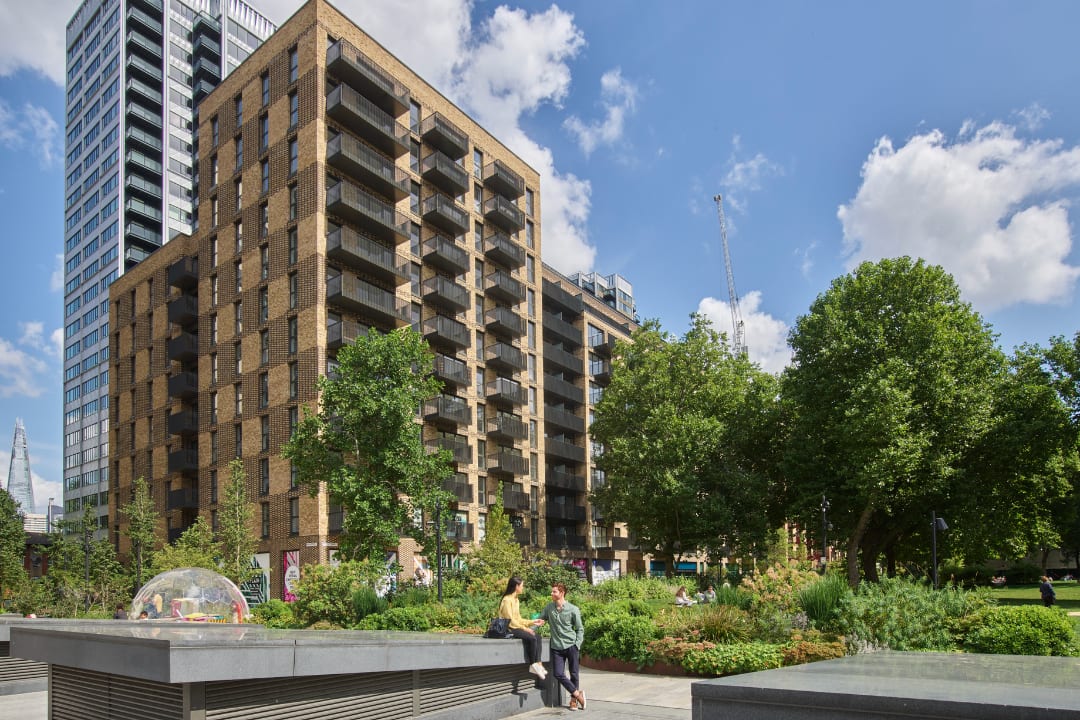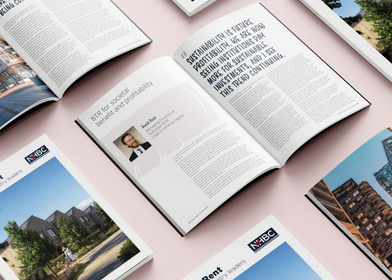The power of placemaking
Build to Rent (BTR) is an exciting and highly innovative sector that has continued to grow, with Savills reporting an incredible £4.3bn invested in UK BTR in 2022, a fourth consecutive record-breaking year.
22 March 2023

A key part of BTR’s continued success has been down to the holistic and long-term approach developers and investors have taken, understanding intuitively the importance of perhaps slower but steadier growth indicators, as it can take up to three years for revenue to exceed costs at a new scheme, and the need for attractive elements in BTR (Build to rent) schemes beyond the immediate requirement for housing.
This is where the power of placemaking comes to the fore. Placemaking is not a new concept and can be defined in several ways, but certainly includes the creation of a place not just in terms of a physical building, its design or collection of external spaces nearby, but as a neighbourhood with a community living there.
The term neighbourhood is important too as this links intrinsically with the idea of a community, the culture or sense of the place and the fundamental need for residents to feel safe and secure, as well as being happy where they live and so invested in the area, regardless of direct ownership.
Anything but a soulless box
‘Soulless box’ is an unfortunate phrase that often arises to describe what are considered basic, badly designed or unhomely rentals, where little or no thought has gone in to placemaking.
This can be avoided by considering not only the design of private spaces but also the benefits of well-considered public ones – facilities and communities are key to this, and these two elements often reinforce each other.
These can include both indoor and outdoor public spaces with seating, as well as parks, playgrounds and even allotments that can become a place for beneficial physical activity as well as mental wellbeing as people are able to relax and intermingle in a shared space.
Changing attitudes post-pandemic have also driven a real desire for interaction and a sense of community in the places people live. As Tom Goodall, Partner and Head of Residential at Related Argent summarises, there is an increasing need to create “communities and neighbourhoods… People want homes, not units”.
A place to live for the right amount of time
BTR is also an essential way of addressing changing living requirements throughout people’s lives.
A great example of how BTR supports individual ambitions is the way it creates high quality homes and neighbourhoods that people do not just live in for the convenience of the location, or to solely avoid a longer commute, but feel at home in and want to live in for longer.
This longer-term model has been shown to work for young professionals who are starting out their careers in cities and will be there for the foreseeable, but perhaps do not plan or wish to live in these areas forever.
This is just one example of how BTR can directly and effectively appeal to a generation that may prefer ‘access’ over ownership, especially when the concept of access not only covers employment opportunities but also leisure options and lifestyle choices they otherwise would not have.
Similarly, the idea of access can also apply to families with younger children for whom staying in a more urban area during the children’s early years makes sense for their current circumstances but may not mean they want, or can necessarily afford, to buy a property in the area for such a relatively short time.
As Michela Hancock, Managing Director Europe at Greystar notes BTR is an ideal opportunity ’to provide a lifestyle choice and community’.
The benefits of belonging
There are many benefits to placemaking alongside BTR, including securing higher occupancies and reliable long-term residents. That is why, while placemaking does require effort and investment, it is advantageous to create more integrated, desirable developments with supporting infrastructure and amenities.
BTR also offers benefits for the wider rental industry too, including increased protection for consumers against unscrupulous private landlords and offering them an attractive alternative to the private rental sector.
Niki Kyriacou, Customer Relationship Manager at NHBC said
‘With the advent of greater flexible working borne out of the pandemic, the BTR proposition has really come into its own by providing homes and spaces that serve more than just a physical purpose but an emotional one too. Communities aren’t manufactured but nurtured and long-term investment is the key to placemaking.’

Download your free copy of NHBC’s BTR Insights
For more from a host of industry experts on placemaking and other essential BTR topics
Get more NHBC news
Read our latest press releases, industry news, articles and house-builder statistics news.
